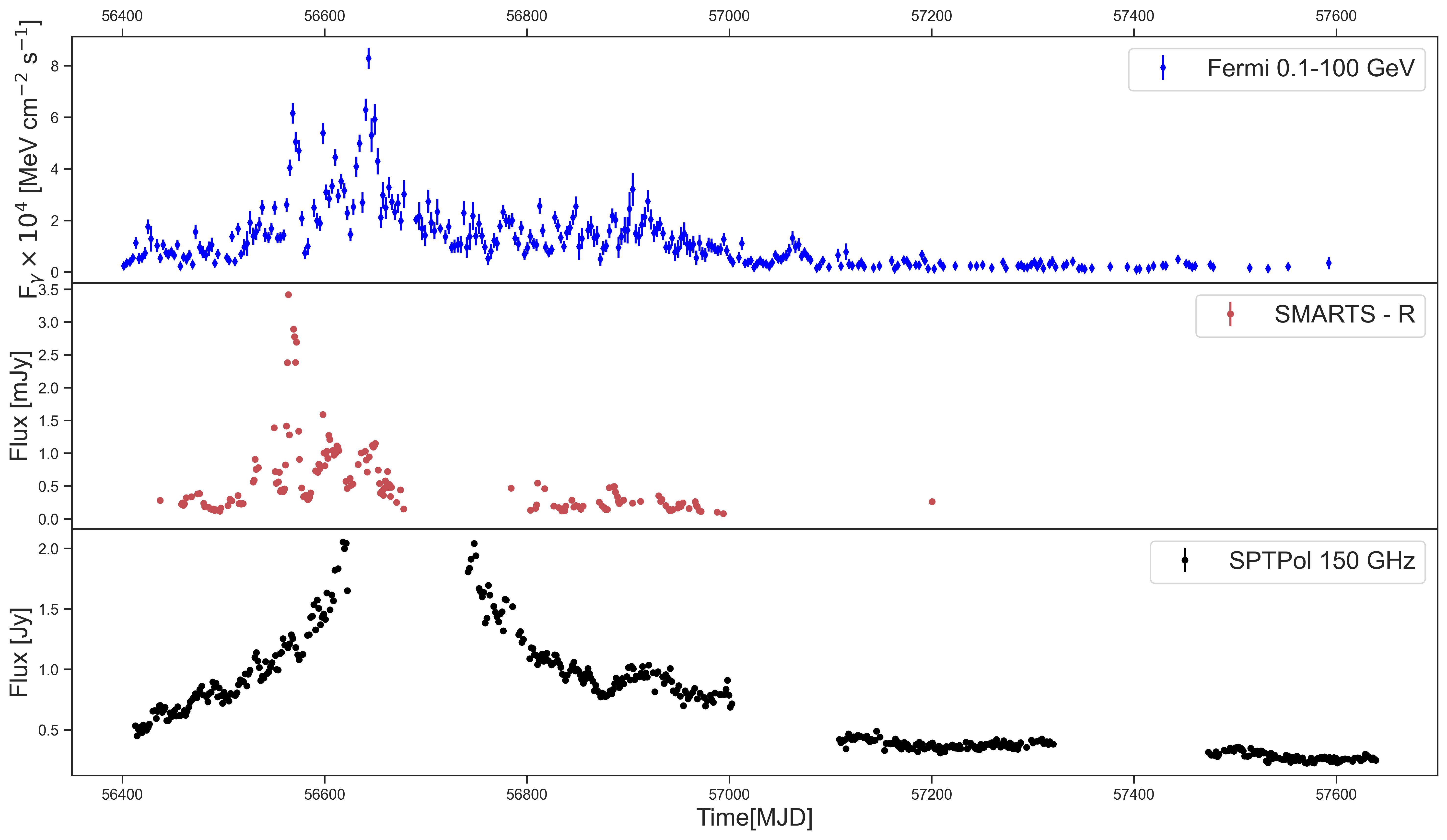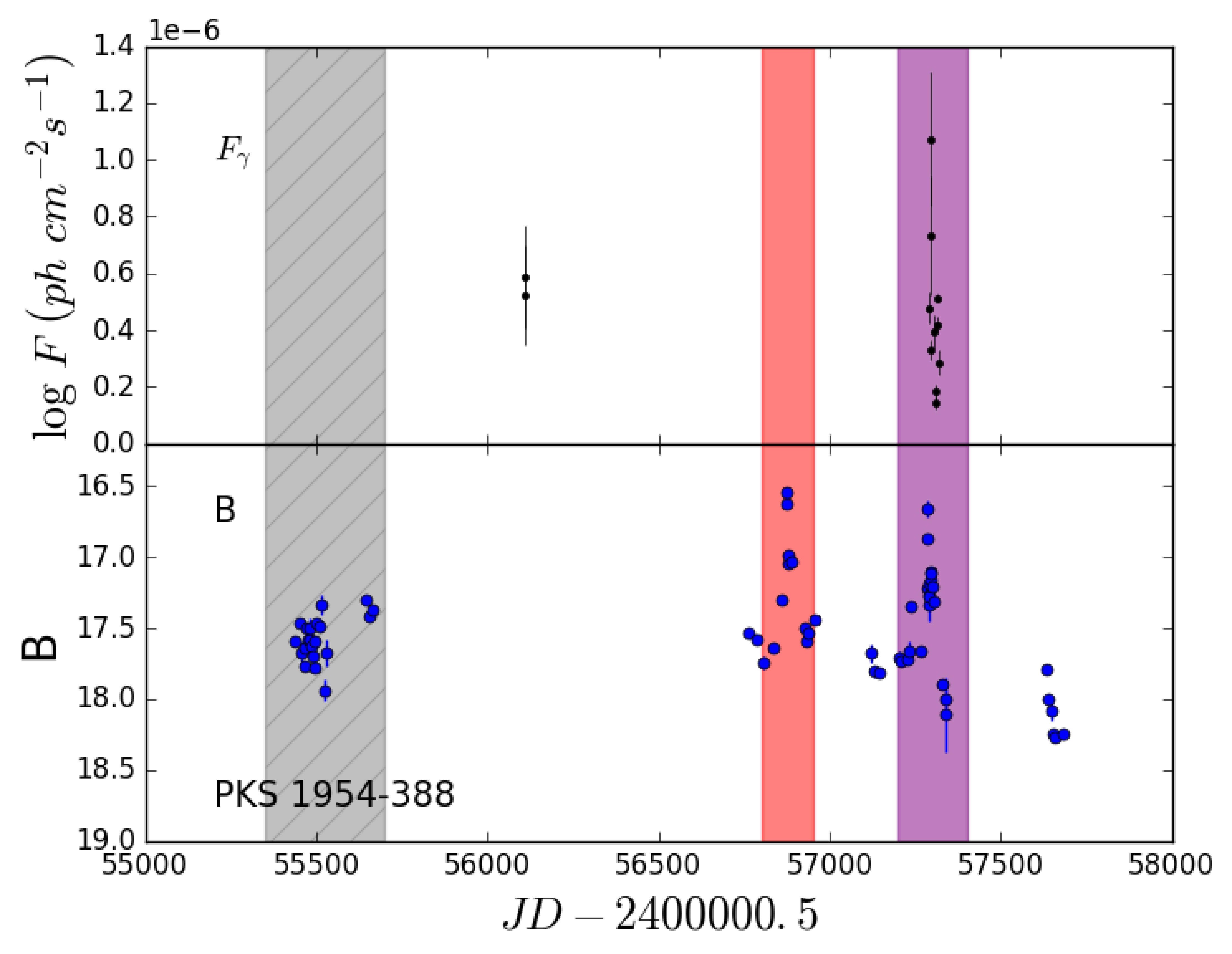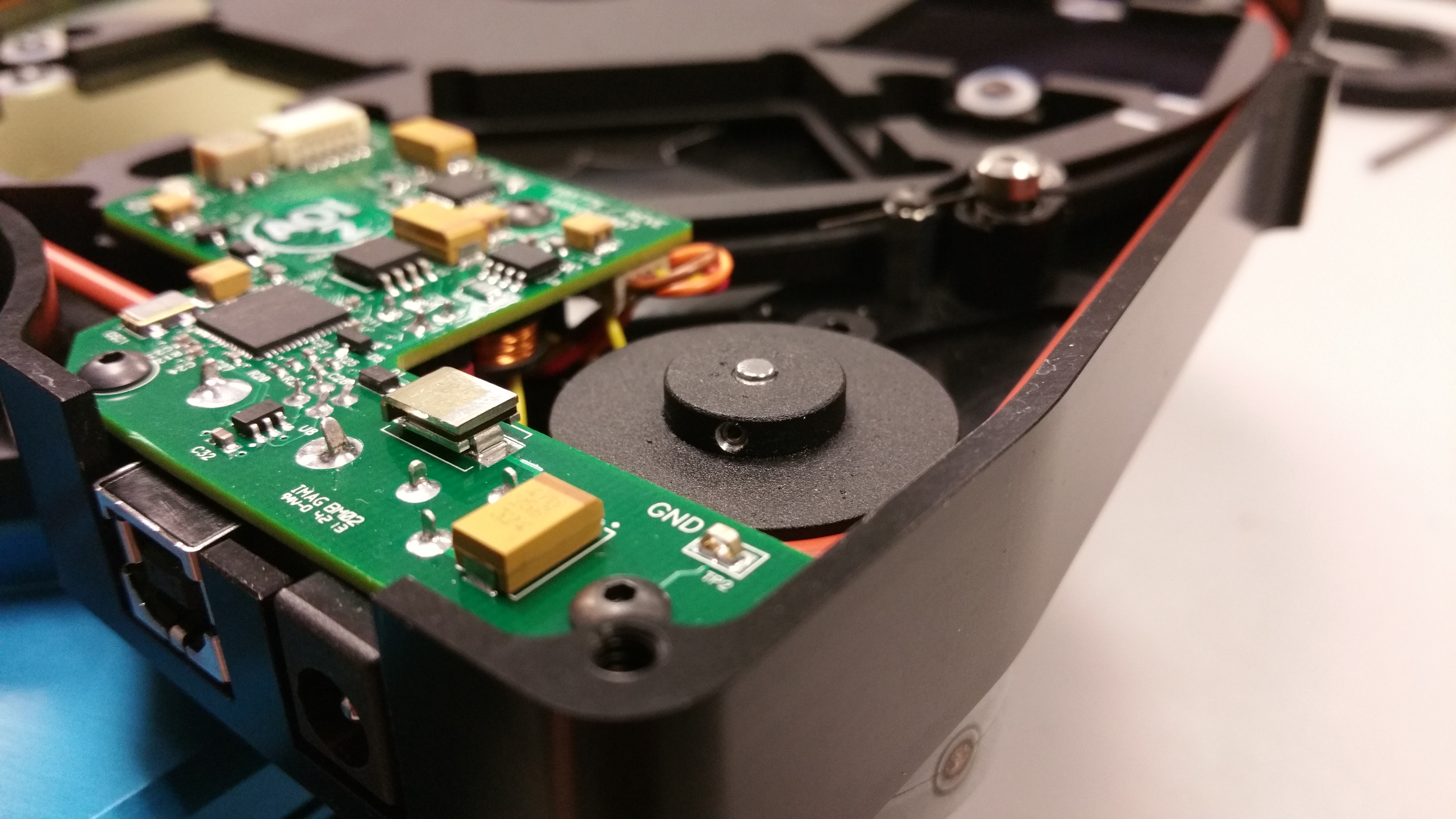
SPT-Pol AGN Monitoring
While continuous high-cadence monitoring of active galactic nuclei (AGN) is common at gamma-rays, optical, and radio wavelengths, AGN monitoring in the millimeter (mm) band has mostly been restricted to short campaigns on targeted sources.Cosmic microwave background (CMB) experiments can now monitor these objects daily in increasingly large areas of sky. We present temporal monitoring of the active galactic nuclei PKS2326-502 from month/year to month/year with a temporal resolution of 36 hours. The flux of PKS 2326-502 is measured at high significance in each 36 hour period (typically S/N = 221.45 --- 2052.45). We use SPT 150 GHz observations to create AGN light curves in the mm band and compare those to light curves at other wavelengths, in particular gamma-rays and optical. our focus source is the blazar-type AGN PKS 2326-502, which has extensive, day-timescale monitoring at gamma-rays, optical, and millimeter wavelengths between 2013 and 2016. We find PKS 2326-502 to be in a flaring state in the first two years of this monitoring, and we present a search for evidence of correlated variability between SPT (150 GHz), SMARTS (R band) and Fermi (gamma-rays) observations. This pilot study paves the way for far larger AGN monitoring campaigns with current and upcoming CMB experiments such as SPT-3G, Simons Observatory, and CMB-S4. These mm-wavelength AGN monitoring campaigns will enhance multi-wavelength studies with facilities such as VRO-LSST.
Figure: Light curves for FSRQ PKS 2326-502. top: Fermi-LAT; middle: SMARTS optical R; bottom: SPT 150GHz. here we can see long-timescale correlation between mm and gamma-ray observations and short-timescale correlations between the optical and gamma-ray observations.
Low loss microstrip materials with MKIDs for microwave applications
Future measurements of the millimeter-wavelength sky require a low-loss superconducting microstrip coupling the antenna to detectors, typically made from niobium and silicon-nitride. We propose a simple device for characterizing these low-loss microstrips at 150 GHz. In our device we illuminate an antenna with a thermal source and compare the measured power at 150 GHz transmitted down microstrips of different lengths. The power measurement is made using Microwave Kinetic Inductance Detectors (MKIDs) fabricated directly onto the microstrip dielectric, and comparing the measured response provides a direct measurement of the microstrip loss. Our proposed structure provides a simple device (4 layers and a DRIE etch) for characterizing the dielectric loss of various microstrip materials and substrates. We present initial results using these devices.
Figure:CMB-S4 OMT/TES detector array ~150 mm across.


SMARTS/ Fermi-LAT Blazars
My masters research focused on studying the multiwavelength observations of Fermi bright blazars in order to search for optical and Gamma-ray orpan flares. All optical data was taken form the SMARTS-Yale collaboration SMARTS and the Fermi monitored soure list Fermi.
Figure: Optical and Fermi gamma-ray lightcurves of PKS 1954-388 from August 2008 - May 2017. The grey hatched region at approximately MJD 55400-55600 represents a candidate orphan optical flare that requires further analysis, as this source was not on the Fermi quick-look data monitoring list (i.e. a minimum reported gamma-ray flux of 1x 10-6 ph cm-2 s-1 ) at the time of the first reporting of SMARTS B-band data. However, as can be seen at approximately MJD 56800-56900 region, another candidate orphan optical flare is evident, which occurred after PKS 1954-388 reached the minimal Fermi flux to be included on the Fermi monitored source list.
Observatory Technician
As the observatory tech. my job was to maintain the telescope and observatories functionality during observing runs, both night and day time and resolve any issues that occured.
Figure: Inside look int the filter wheel of the Apogee Delt camera that is currently being used on the WestRock Observatory.


Solar Observer and Astro-Education Outreach
As a part of a team of student observers, we conducted daily observations of the sun in order to track solar activity for a total of 4 years while working under the Georgia Space Grant consortium GASGC. During this time I was also a member of the education outreach team where we traveled to elementary schools in the tri-county area and Atlanta to show mobile planitaruim shows and conduct physics demos for students.
Figure: Procesed image of the sun as taken from the WestRock Observatory during one of my observing runs.